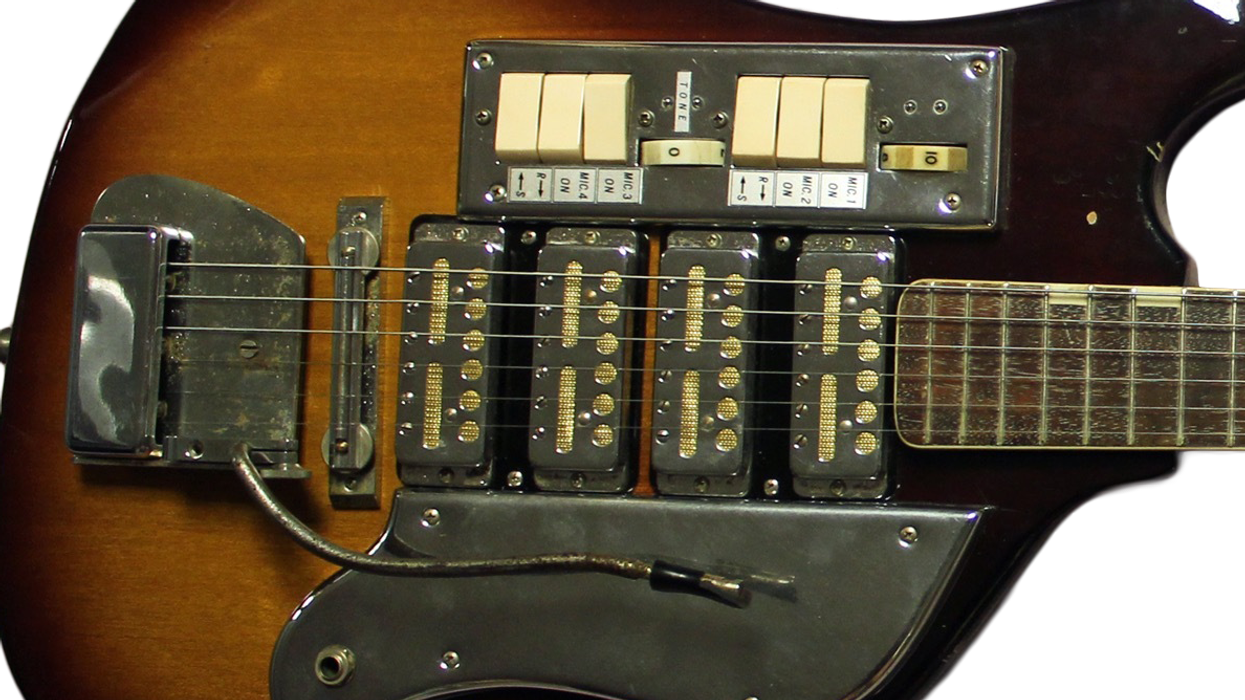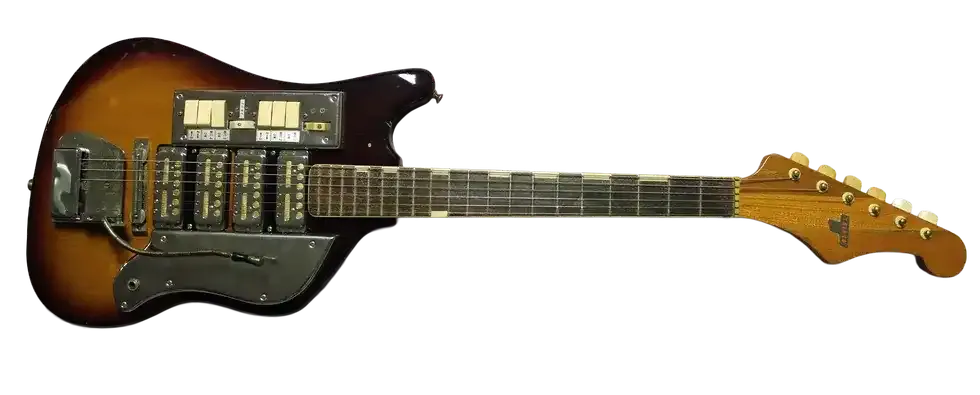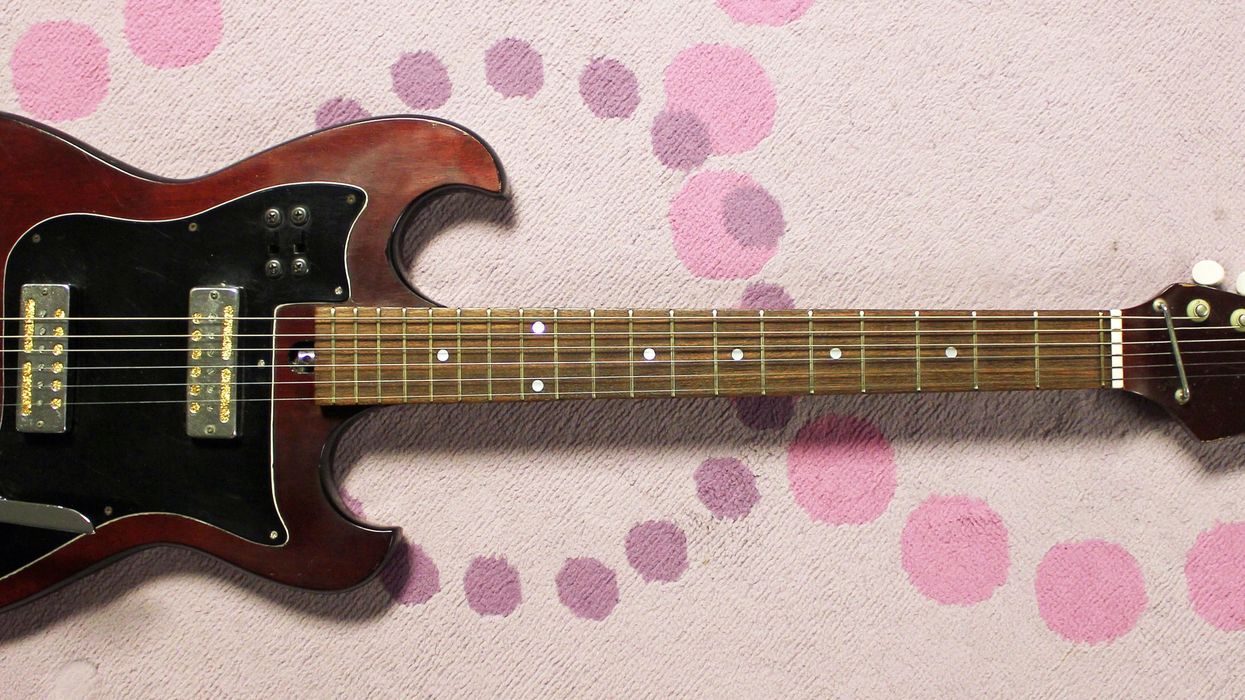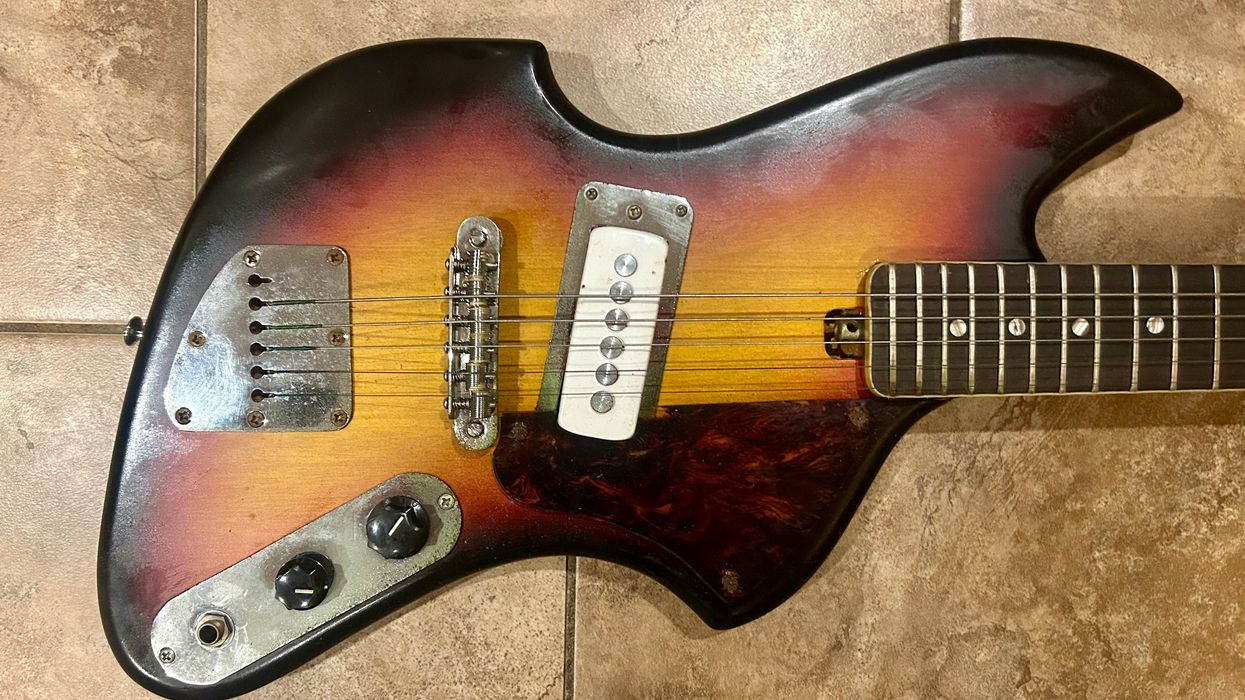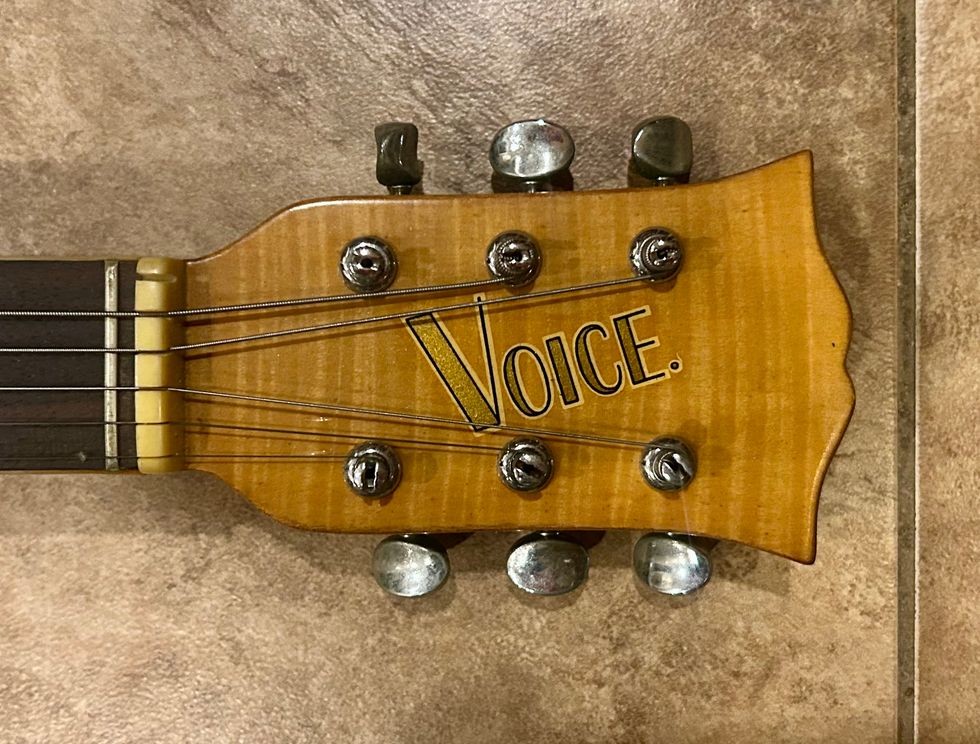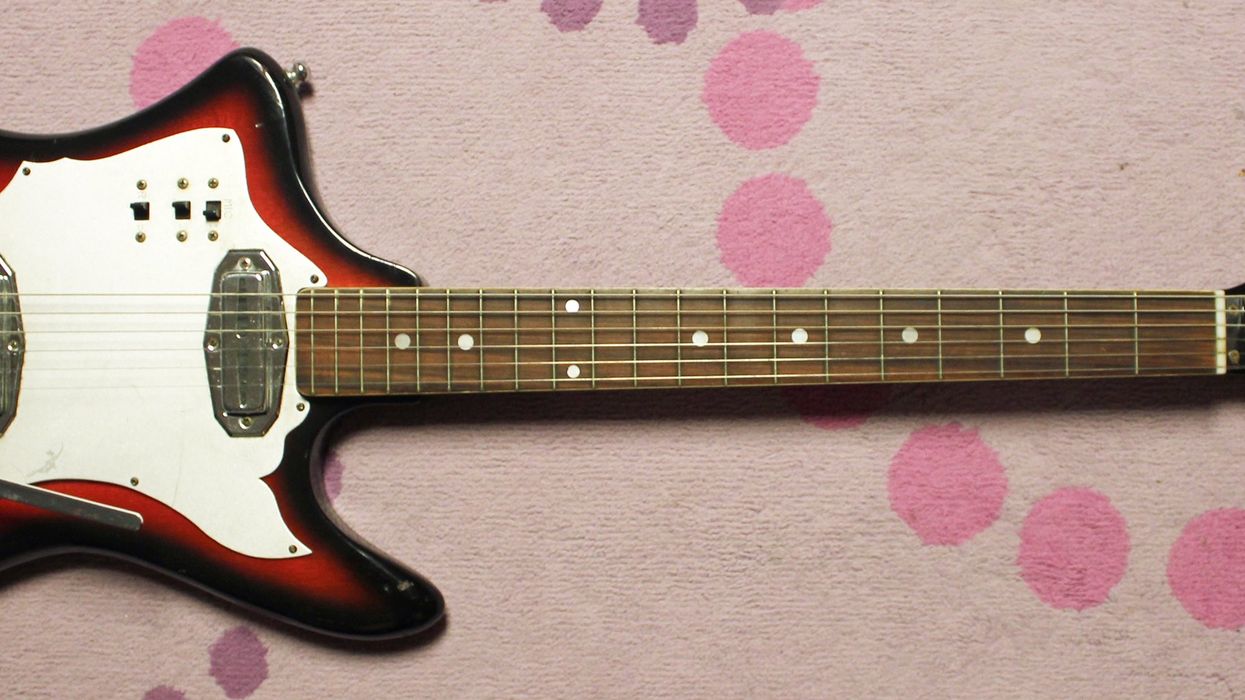I never seem to get rid of anything, including clothes. I have Vans from the ’80s that my son swears are worth a “ton of money,” and I have t-shirts dating way back. Since I never embraced fads, most of my old clothes are retro cool—according to my daughter, at least. The other day she was going through some aged t-shirts of mine and managed to claim a whole pile as her own. I looked through the shirts she liked, and among them I saw a Univox shirt, which I had totally forgotten about, but I quickly recalled that angular logo. (Man, the Univox Super-Fuzz is still my favorite all-time fuzz pedal.)
Here’s some backstory on the brand. The Unicord Corporation in New York started to import various Japanese models under the Univox name in the early 1960s. Those instruments were made at the rather famous Matsumoku guitar factory in Matsumoto City. Unicord and Univox had a pretty good run and lasted until the mid-’80s, when the Univox brand was phased out and Matsumoku burned down. To be honest, I never really dug most Univox guitars, because I mainly remembered them as ’70s-era copies of other brands. But being the nut that I am, I was able to track down some of the earliest Univox models, which were the brainchildren of a rather creative dude.
At that time, Matsumoku had two employees who played guitar and really dove into the factory’s new endeavor.
Let’s take a trip back to 1964. Matsumoku was ending business with the Singer sewing machine company. Basically, Matsumoku was a wood-crafting facility that made the cabinets for Singer. (I even have a Matsumoku-made cabinet and sewing machine in my house.) Also in Matsumoto, Fujigen was starting its guitar line and soon had instruments made at Matsumoku. By all accounts, Matsumoku, which had plenty of old, properly dried wood, had an easy transition from manufacturing cabinets to making some good-looking guitars. Not always super playable—but cool nonetheless.
Matsumoku had two employees who played guitar and really dove into the factory’s new endeavor. An older designer named Noritkatsu Harayama created parts such as the infamous tremolo/bridge unit found on many Matsumoku-made axes. Harayama later went on to become a master guitar-neck maker, and his work was featured on many ESP, Kramer, Schechter, and Moon models. The other employee at Matsumoku was Nobuaki Hayashi. Let me tell you, H. Noble (as he calls himself) is a mad genius. His current company is Atlansia Guitars. If you want your mind blown, check out his creations. Back in 1964, H. Noble was filling notepads with guitar-design ideas. Tragically, most of his coolest never saw life. But the two early Univox electrics in this column’s photos offer some insight into the man’s vision.
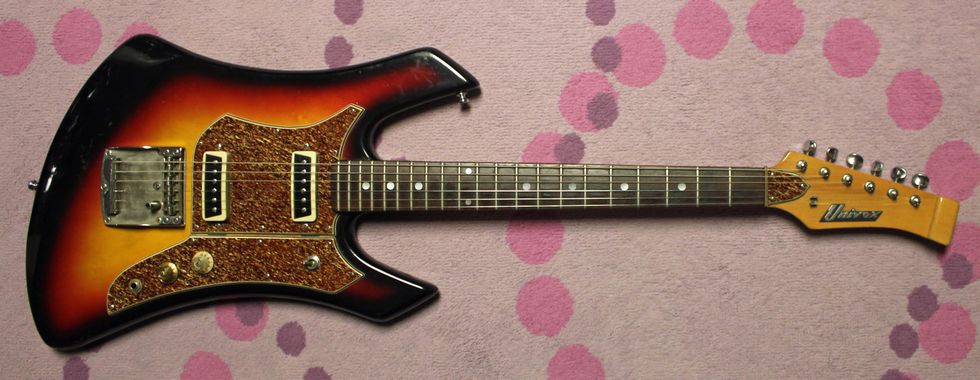
The headstock on the UC 6-string sports some subtle flair at the end, but the entire body shape and split pickguard reveal an eye for the original.
Now, I don’t know the exact model names, but many of the Univox guitars were called UC-2 or UC-1. Check out the design on these. I don’t even know how to describe them. The headstock shape with the little stack on the end, the double cutaways like two big horns, the sweeping lower bout.… Those pickups were in-house jobbies and always play with sizzle. The controls were totally simple volume/tone knobs with a 3-way switch.
Every time I’ve visited Japan, I met with H. Noble, which is not an easy task. He’s a great person with a superb mind. He’s very thoughtful and soft-spoken, and he values his time. I also visited the site of the Matsumoku factory, which is now a lovely park. There’s so much history to cover with Matsumoku, Univox, and H. Noble that I could probably fill a good-sized book with what I know. But for today, let’s give a nod to all these fine people, and to my daughter who gave me another idea for another column.


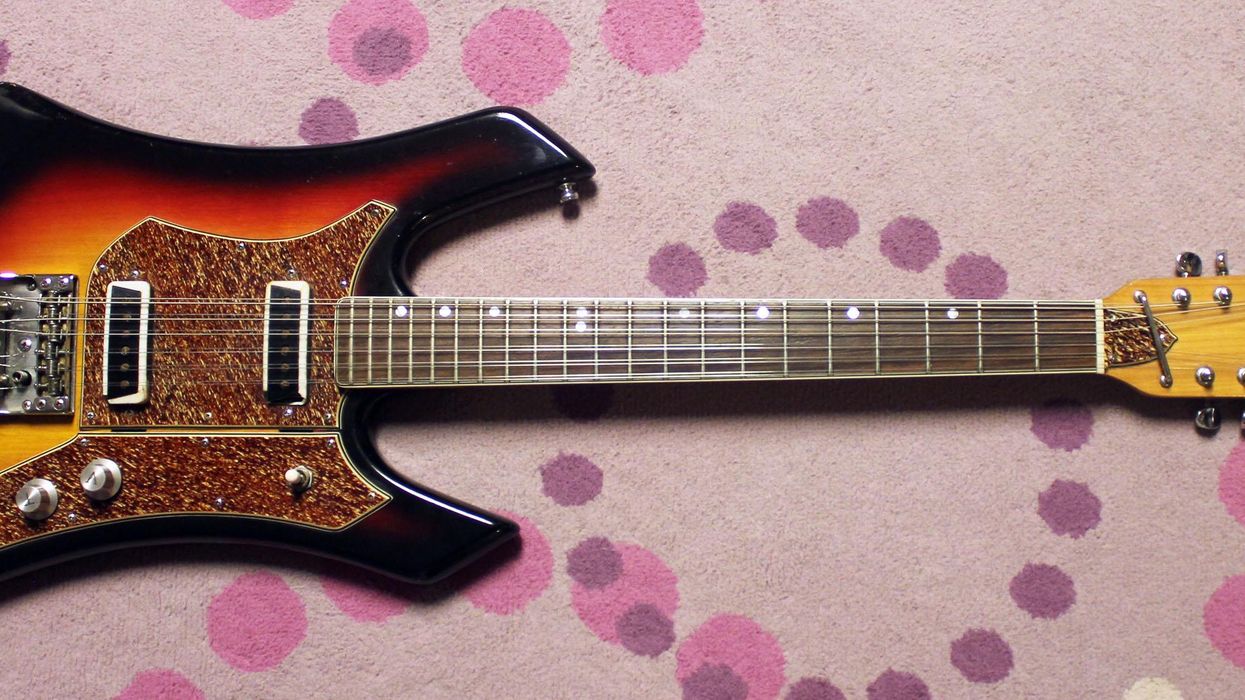


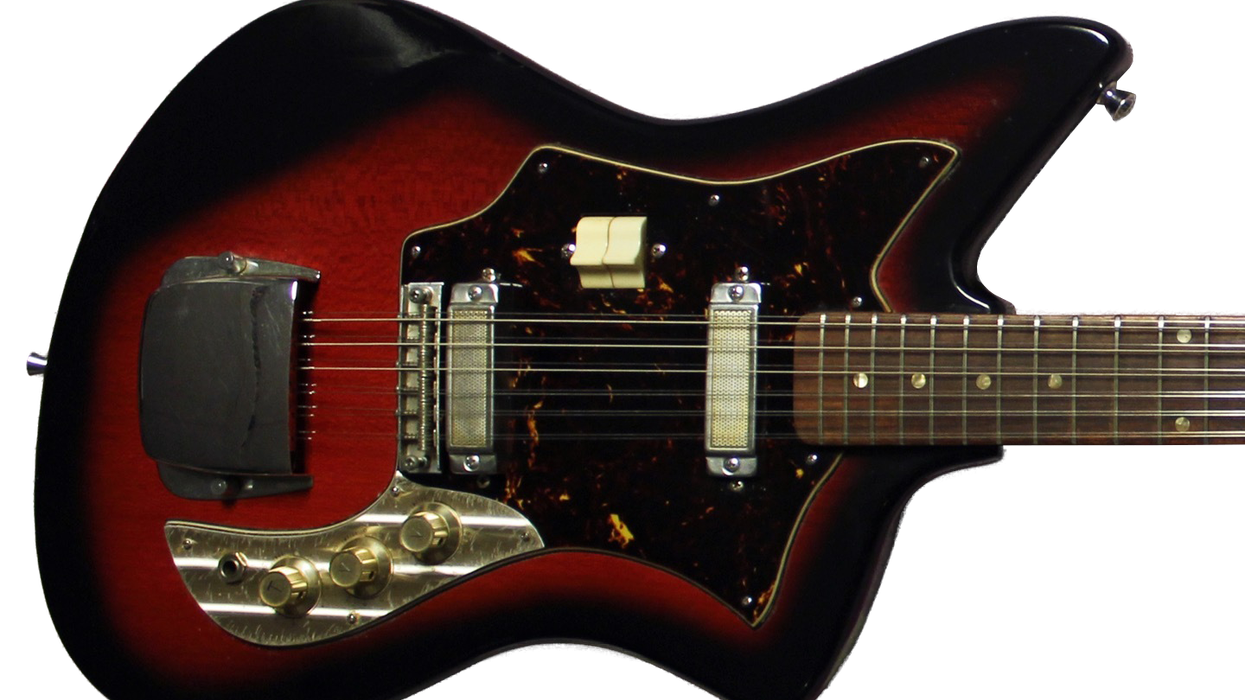
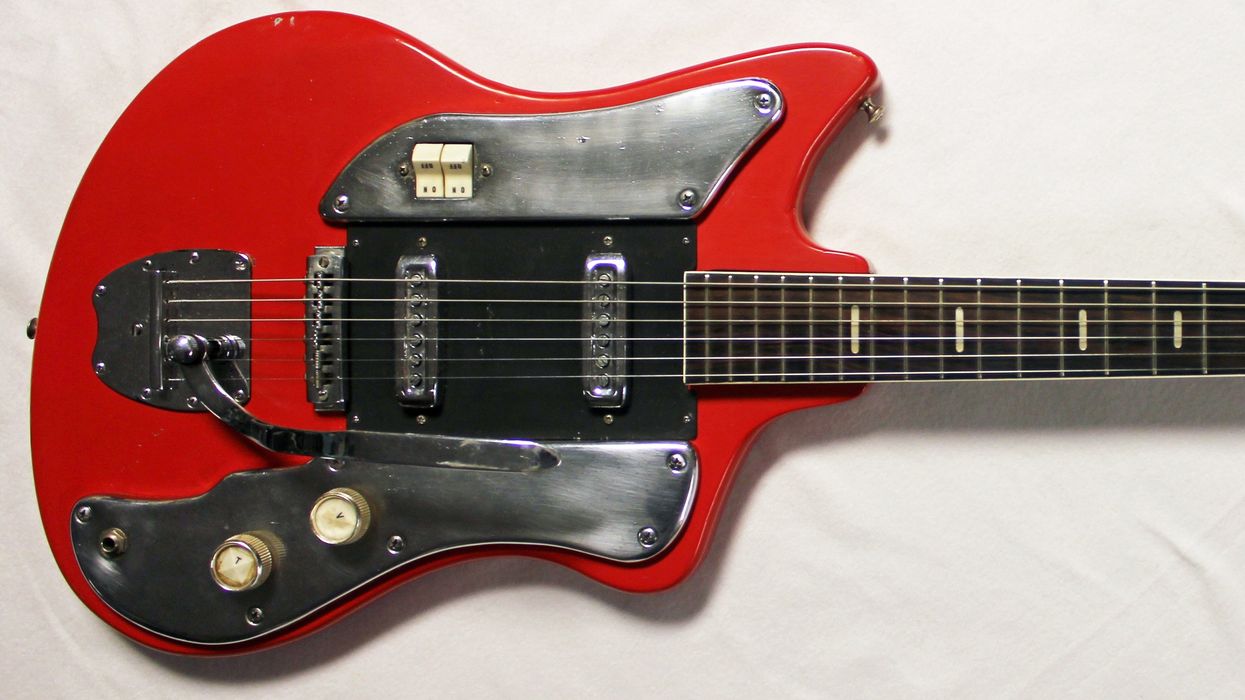
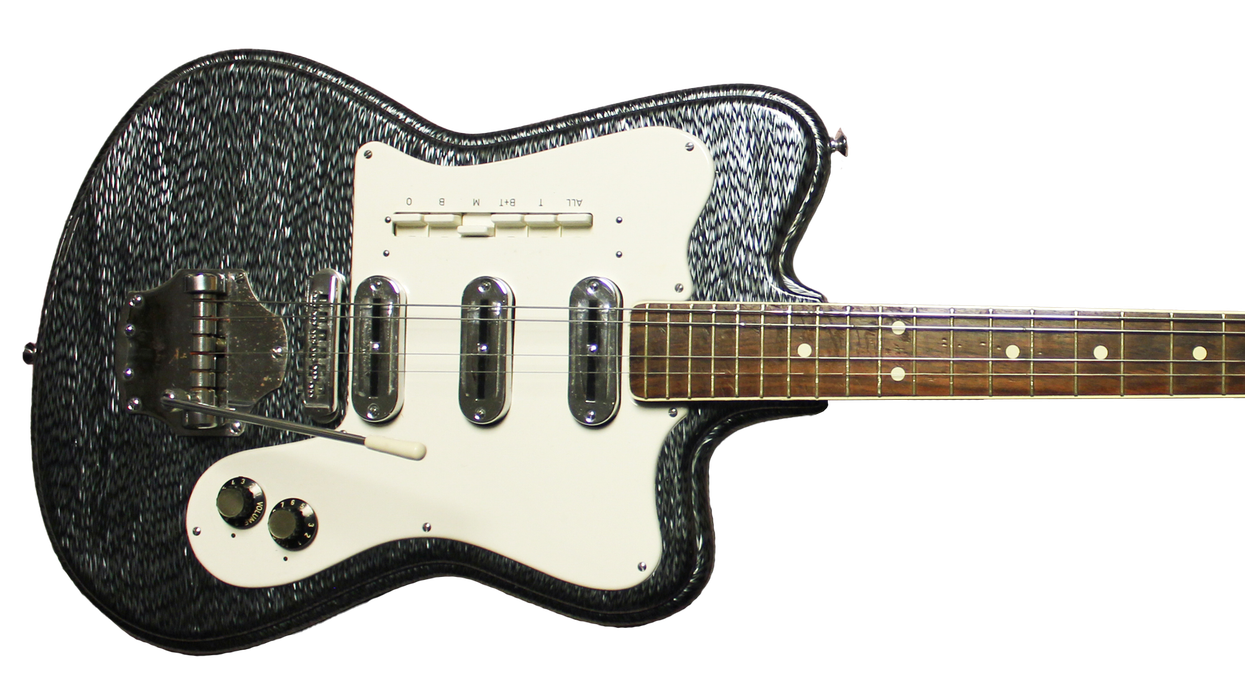
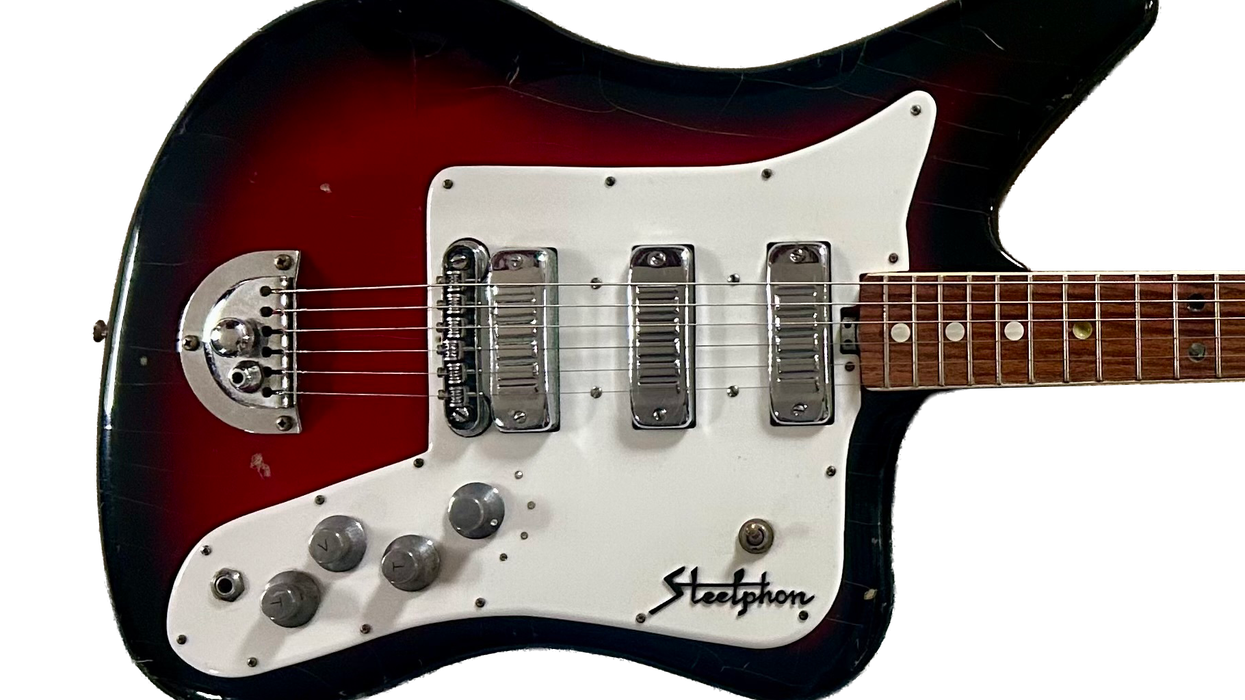
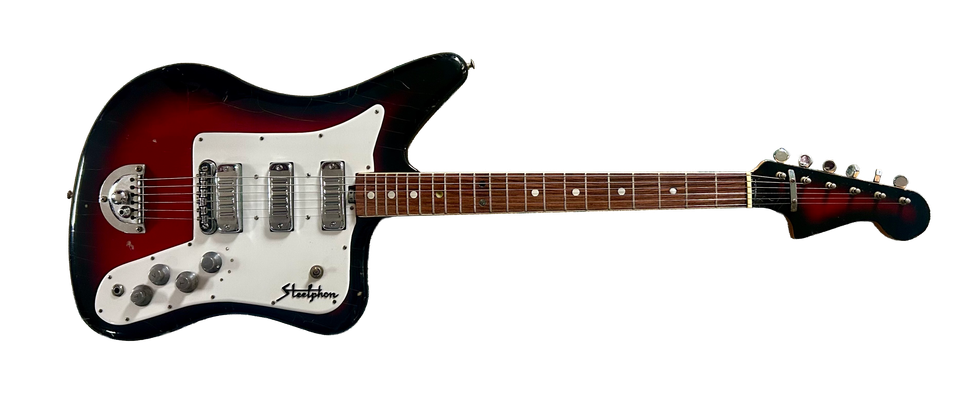 Then, in the dream, I “awoke” and realized I was back in my bedroom, and it was all just a dream. The kicker is that I was still dreaming, because that “paddle” guitar was suddenly in my hands—then I woke up for real! How about that misadventure?
Then, in the dream, I “awoke” and realized I was back in my bedroom, and it was all just a dream. The kicker is that I was still dreaming, because that “paddle” guitar was suddenly in my hands—then I woke up for real! How about that misadventure?


![Rig Rundown: Russian Circles’ Mike Sullivan [2025]](https://www.premierguitar.com/media-library/youtube.jpg?id=62303631&width=1245&height=700&quality=70&coordinates=0%2C0%2C0%2C0)


